The best beginner Jellyfish
Keeping Jellies can be daunting, but there are some Jellyfish species that are easier and more forgiving than others, perfect for someone who’s new to the hobby! We consider a jelly to be easy to care for if it doesn’t require too much investment, can live in smaller tanks and are able to live in a wide variety of different conditions.
#1 Moon Jellies
Moon jellies are a classic jelly, and perfect for those new to the hobby! They are hardy, don’t require much space and don’t even sting. While moon jellies are very hardy and easy to keep, most strains need to be kept at 23c (73f) at most so if your room temperature is higher than that then you might have to look into some cooling solutions. They eat a wide variety of zooplankton and similar sized foods. The best would be live baby brine shrimp but if you don’t have access to that then frozen baby brine shrimp or even adult brine shrimp would work well too!
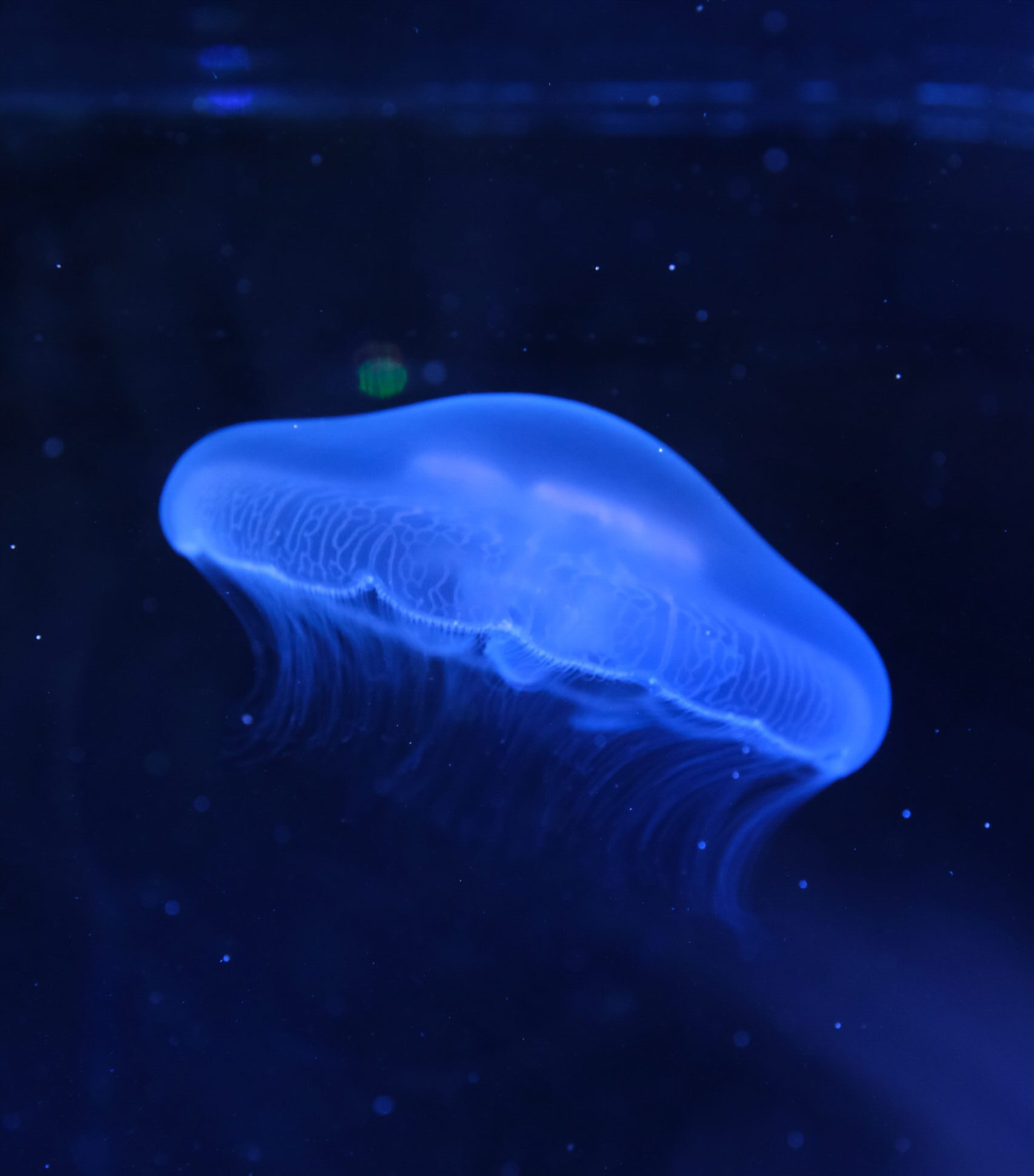
A moon jellyfish (Aurelia aurita)
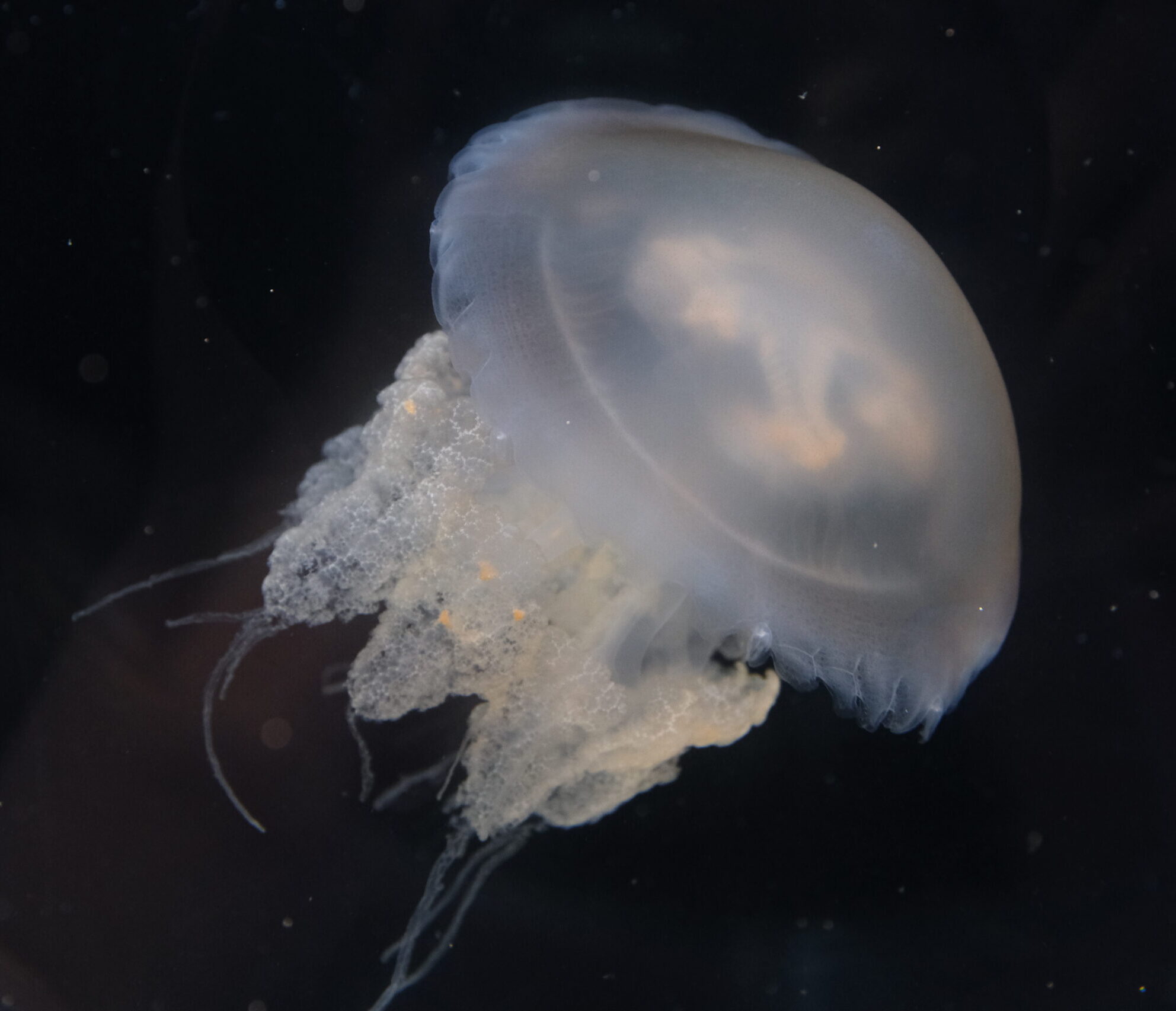
Marble Jelly (Lychnorhiza lucerna)
#2 Marble Jellies
Marble Jellies are also a fantastic beginner jelly. Its elegant colouring and its stunning oral arms make this species look absolutely amazing in a tank. They have the added advantage of being able to tolerate much higher temperatures, up to 26c ( 79f)! This allows you to get away without using any cooling solution and are able to thrive at room temperature. These guys also eat live and frozen brine shrimp just like moon jellies do. Although their have short tentacles and so can be kept pretty densly, we suggest giving marble jellies more space than moons as they look best when they are able to pulse and move around a bit more freely.
#3 Upside-Down Jellies
Upside-down jellies are an extremely unique jellyfish. Unlike others, they do not stay suspended in the water column and actually prefer to set on the bottom of the aquarium with their flat bells resting on the floor. This allows them to be one of the only jellyfish that you can keep with substrate, live coral and even some small fish! They do require heating and full-spectrum lighting but if you are keeping coral you most likely have these things already. As these guys sit on the substrate or against the walls, they can also eat a far wider range of foods than other jellies might, they can eat most types of prepared coral food and will catch some when you are broadcast feeding your corals That being said, it wouldn’t hurt to give them some baby brine shrimp every once in a while!
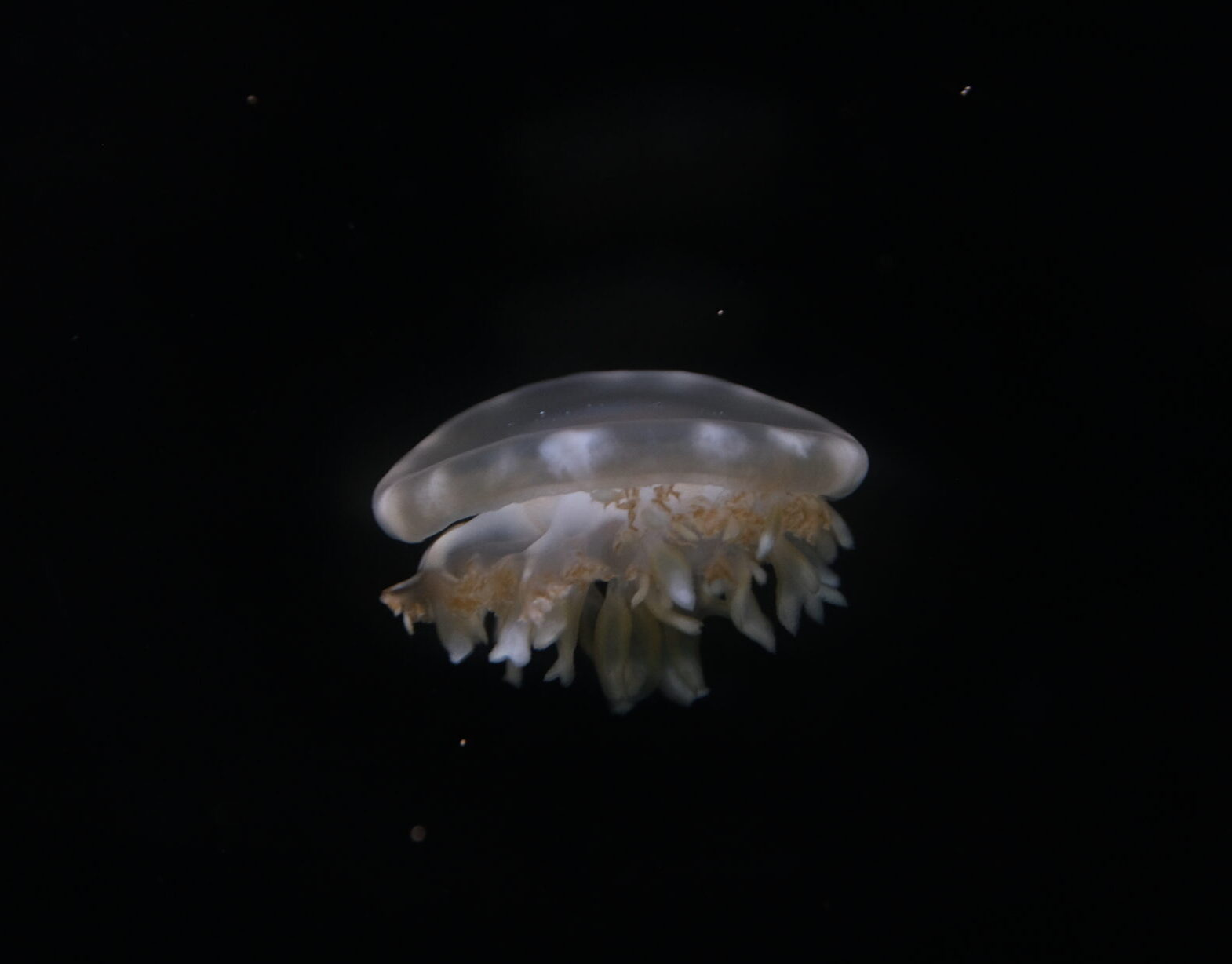
Upside-down Jelly (Cassiopea sp.)
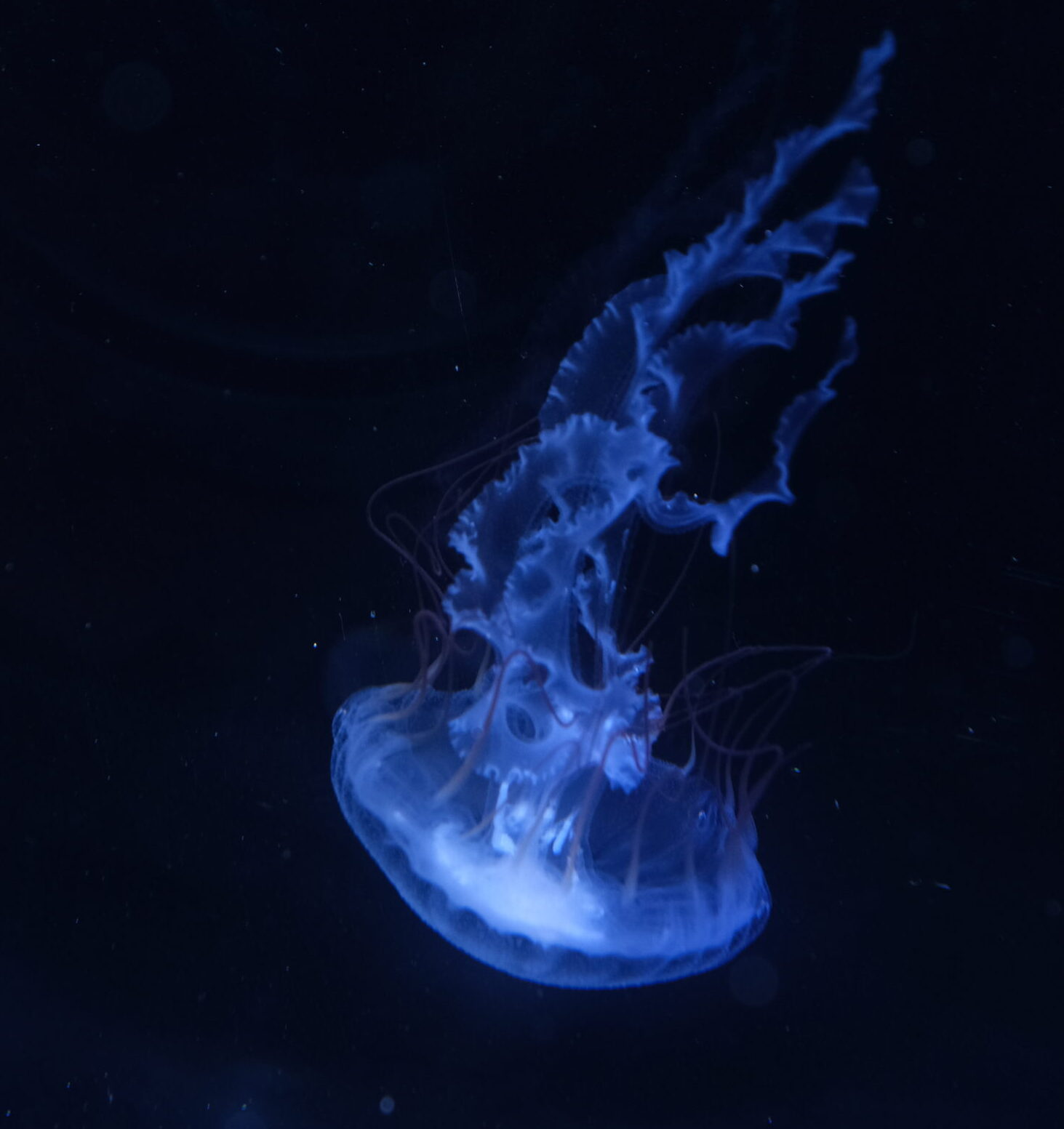
South American Sea Nettle (Chrysoara plocamia)
#4 South American Nettle
Some may be surprised to see a sea nettle on here as they are generally known as harder to keep jellyfish. But the South American Sea Nettle is different in this regard. If the SA nettles have enough space (at least 3 litres for each inch of the bell) then it can thrive. It does like slightly cooler waters, about on par with the moon jelly at a max of 23c (73f) but with an optimum temperature of around about 18-20c. They have the extra benefit of being able to eat larger animals, such as frozen mysis shrimp or even moon jellies! As the SA nettle (like any nettle) has long tentacles and oral arms, its important to give them enouhg space so they don’t get tangled with each other too often. But if they do, gently seperate them with a piece of rigid airline tubing or a chopstick or something similar.
#5 Flame/Iceicle jellies
Flame/iceicle jellies are a great little jelly to keep in tropical temperatures, they don’t need a full spectrum light as they don’t photosynthesise. They can thrive in temperatures up to 26c (79f) and are generally very active. They aren’t too big, so feeding them live or frozen baby brine shrimp is the easiest way to keep them happy. Although their tentacles aren’t too long, we still suggest to keep them not too densly as they look the best when they are able to move freely around the tank.
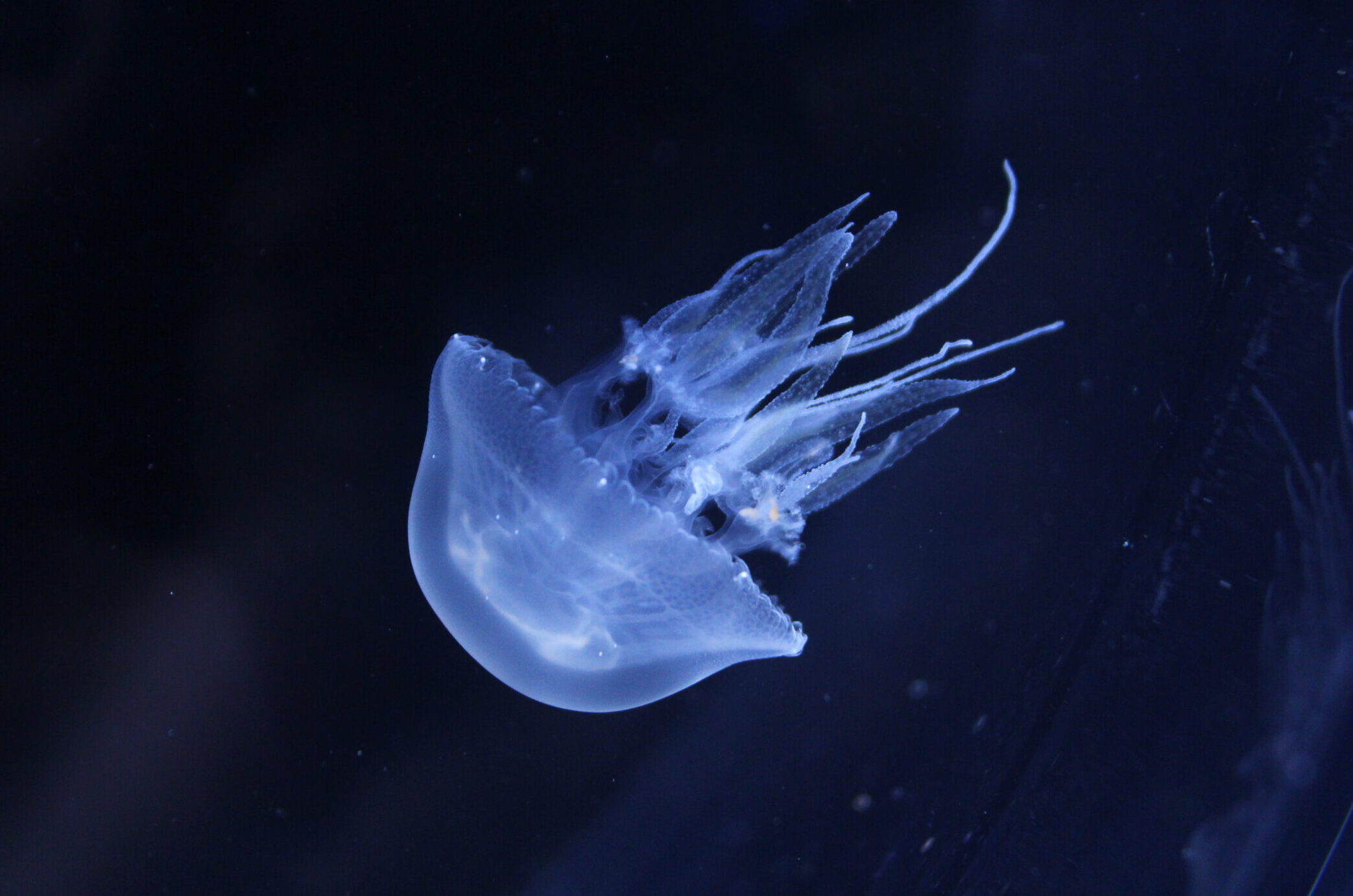
Iceicle Jellyfish (Rhopilema escelentum)
